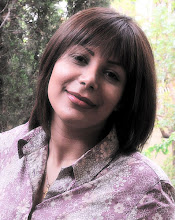Ladies and Gentlemen, The C Word has important news to announce:
Sun Kim makes proper mugs with HANDLES! Yes, it’s true. Maker of very fine porcelain tableware, she did her stint in atelier de Waal, and emerged unscathed. None of that dimpled beaker business, so popular among makers of whitish ware. You can lift one of her mugs to your lips, and slurp your tea without fear of burning your hands, dropping the mug or waiting so long to touch the damn thing that the tea’s now tepid and undrinkable with a milk slick on the top. Yeucccchhhhhhhh.
To business then…There is no doubt that under the auspices of Rosy Greenlees, the Crafts Council has become vastly more professional. Whereas the old Politburo spawned the Chelsea Craft Fair, which was a King’s Rd version of the annual church bazaar, so the New and Improved version has produced Origin which is altogether more Knightsbridge. It kicks off in a big white glistening tent in the Somerset House courtyard, next to Waterloo Bridge, in London, with fat carpets underfoot and every ‘stall’ a polished white or grey sort of cabin with plinths or whatever is required. You can plug in your laptop and play on line backgammon all day if you want.
As to the craft, well I didn’t see Chelsea after about 1985, and yesterday was the first time I’ve seen Origin, but ‘a source’ told me that they’d brought many new, younger makers this year. Gone, apparently, are most of the ‘old guard’. I’ve no idea who the OG were, but they’ve gone anyway, so perhaps it doesn’t matter. For better or worse, Origin now represents the newyoungupandcoming glitzy professional designer-makers. Origin is a shiny, glittering shopping mall and it meant business. It is unequivocally the commercial, commoditised end of craft, Greenlees’s ‘sector’ at work.
StrategySo, like pushing an elephant up a long flight of stairs, you push craft up market and, all being well, the makers can, at last, earn a decent living. So everything is polished and ‘well made’ to the point of self-parody. It has to be, this is the ‘gold standard’. I have no idea if the strategy can work. It depends on the buyers understanding that they must pay much higher prices than they would for something which may well look quite similar, from Habitat or Cargo, but is in fact mass produced. Anecdotally at least, it can work. Chris Keenan designed some work for Habitat, and someone came to his stall at Origin and said, ‘Oh, I’ve got the one from Habitat, now I want one of the real thing.’ So, if this version of craft can project an idea of ‘authenticity,’ the ‘Original’ in fact, then the strategy could be a winner.
Class again..The risk, and it could be a big risk, is that pushing it up market will just make it look, well, upwardly mobile, 'pretentious,' as someone, (Grayson Perry) once said. You see, you cant ever get away from talking about class when it comes to craft. If it goes posh, and people can actually earn a living without starving in the winter, it's called 'pretentious', in other words it's 'jumped up', 'got idea's above it's station.' The makers are s'posed to be peasants for godsake. Not earning a good wage. God's bread, whatever next, muttered the colonel, snorting into his port. My hunch, especially in the light of the global banking crisis, is that the top end will work, but I’m not sure about the knitted socks. By top end, I mean hand made, very high quality silver tableware, for example, well-crafted, contemporary design. I’d buy it. Portable wealth d'you see. Ceramics sits right in the middle. I’m not even going to try and guess.
Too much craft for the contentWhat i'd really like to see, is a move away from the insistence on 'well made' or rather, dare I say it, a more sophisticated understanding of what constitutes 'well made.' At the moment it's still stuck, as it ever was, in the 'too much craft of the content' rut. Most of the objects I encountered were just too ordinary to tolerate being blisteringly well made. Their material perfection just couldn't be justified by the banality of the object. So, what I'm really saying, is I want to see more substance and less craft. But this is not what Origin is about. I am in the wrong place.
Crafting SpaceSo much for the stalls, there are other things at Origin too. You could say it’s trying to be all things to all people. Hidden in dark nooks and crannies in the liminal spaces between the stalls, there are pieces of art. You can tell, because they’re on their own in dark spaces with carefully, self consciously written, curatorial flannel accompanying them. For all I know, these might be fabulous, immensely interesting works. If only one could see them. I wanted to like then and be happy they were there, god knows, for these I am certainly the designated audience. But they felt more like craft's dirty secret than convincing art moments. And as all good C Worders know, Craft is in fact Art's dirty secret. There is also an ‘interactive’ space. At first I thought this was a highly imaginative piece of audience research and was well impressed. I was wrong, it was an interactive textile work – which could still work as audience research but I don’t think that was the primary purpose. There was a big wire cage with ribbons woven into it on which were written the answers to questions such as: ‘what did you buy and why does it interest you?’ ‘Who are you giving the object to and what do they mean to you?’ and ‘Describe a gift you’ve received and how its changed your relationship with the giver.’ Find out more
here.
The interactive project worked better than the art nooks. It was much more central and open and also inviting because you could sit down. They should have provided tea though. It was based on the old Persian poetry sharing thing, so tea should definitely have been there – or wine perhaps.
The Jury's still out...For those of us who love craft because we relish its lowly status, its down-homeness, its folksyness, and we use that to explore a host of related ideas and tell all manner of low down tales, then Origin is a Big Yawn. It is mesmerising, busy with people and objects, and, once I’d got round it all, stupefying. But it isn’t meant for me. It’s meant for the people who go to Dorothy Perkins on Saturday, or Harvey Nichs on Sunday. For Craft readers who know London, but haven’t been to Origin, it’s like a turbo-charged CAA (Contemporary Applied Arts,) but more Bond St. than Oxford St, more Harvey Nichs than Dotty P, but both, I assume, are the intended market. The thing that I did feel sad about was that I couldn’t think of a single thing, that I really wanted. I was left with no feeling of desire or covetousness. I reflected on that for about half a day, and then remembered Sun Kim’s mugs with their silky satiny matt glazes, and their proper, properly placed, handles. So, just one thing then.
































































